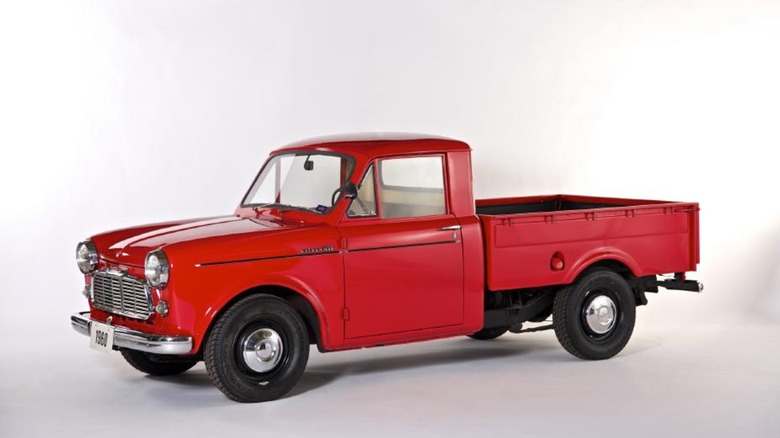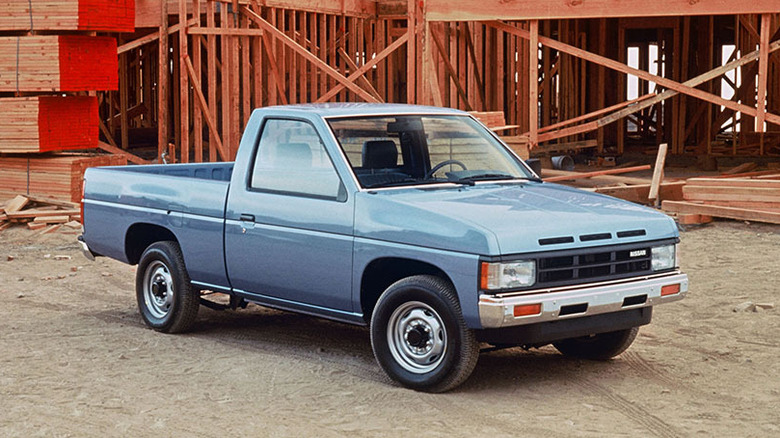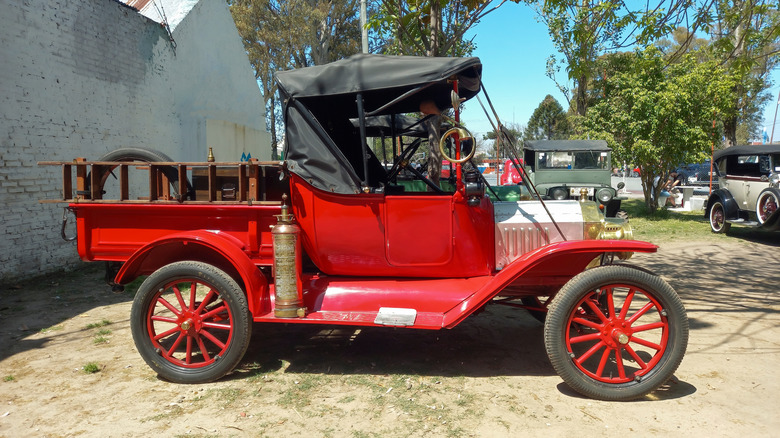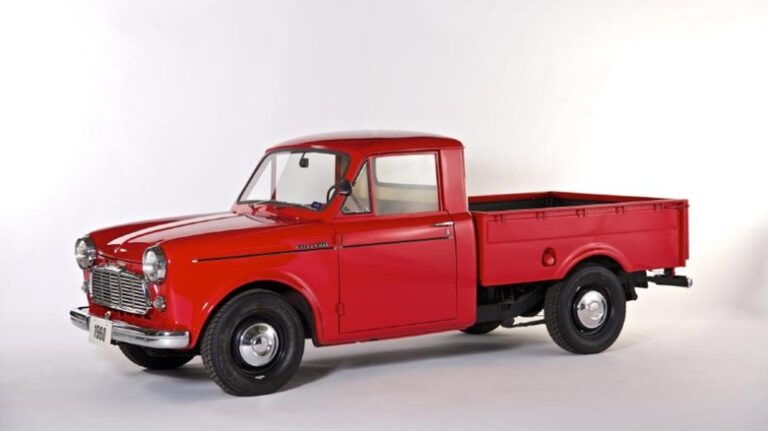The Dawn of a Legacy
In 1958, a small red Datsun pickup truck made its debut at the Los Angeles Auto Show, marking a significant milestone in American automotive history. Known as the Datsun 220, this compact truck was the first of its kind to be sold in the U.S. market. It shared its chassis and engine with the Datsun 210 sedan, featuring an inline-four engine nicknamed the “Stone Engine” for its durability. At the time, Nissan was still using the Datsun name in America.

The introduction of the Datsun 220 and 210 models in the U.S. was more than just another import; it was a statement that Japan could build vehicles tailored for American roads and buyers. Nissan’s success in off-road endurance racing, such as the grueling 1958 Mobilgas Trial in Australia, bolstered confidence in its engineering prowess. Both the 210 sedan and the 220 truck were built on the same durable platform that had proven itself in one of the toughest rallies on Earth.
From Humble Beginnings to Full-Line Legacy
The impact of the little red Datsun 220 pickup was profound and lasting. It initiated a journey that would span over 60 years and shape Nissan’s identity in America. The Nissan Hardbody, introduced in the 1980s, carried the same DNA as the Datsun 220: simple, strong, and built for real-world use. The Hardbody would later become a dominant force in the Baja 1000 and was the first truck designed by Nissan’s U.S.-based design team.

Today’s Nissan Frontier still echoes the form factor and mission of the Hardbody. Nissan’s 2022 campaign “60 Years in 30 Seconds” highlighted the original Datsun 220, tracing the brand’s legacy through the 240Z, Hardbody, and modern Frontier. It all began with a truck that was initially thought to be insignificant, but the Datsun 220 earned trust one delivery, one job, and one sale at a time, laying the groundwork for Nissan to become a significant player in a segment once dominated by American brands.
A Brief History of Pickup Trucks
The pickup truck has been an integral part of American culture since long before Japanese automakers entered the U.S. market in the late 1950s. The story began in 1925 when Ford introduced the Model T Roadster with a pickup body, the first factory-built pickup. Over time, pickups evolved, becoming more refined and versatile. By the 1940s, the Dodge Power Wagon added four-wheel drive, transforming the pickup into a true off-road utility vehicle.

Through the decades, the pickup truck has transformed from a bare-bones workhorse into a highly customizable, often luxurious, everyday vehicle. The introduction of models like the Chevrolet Cameo Carrier, Volkswagen, Jeep, and Ford’s compact pickups, and the Ford Ranchero, which blended car comfort with the utility of a truck, showcased this evolution. Today, trucks continue to evolve, retaining their working-class DNA while offering a wide range of options for consumers.



